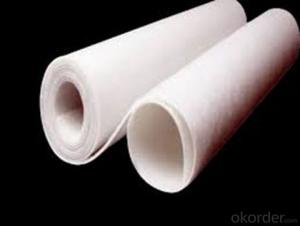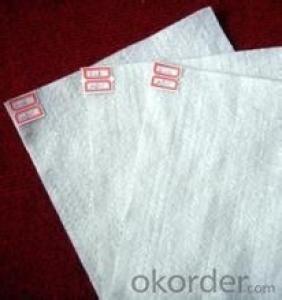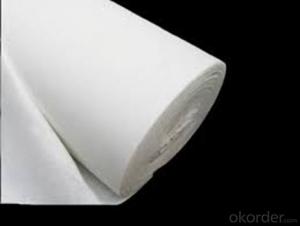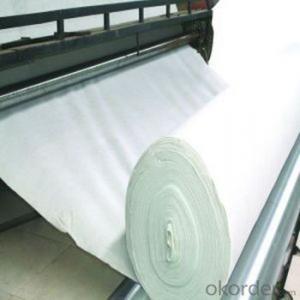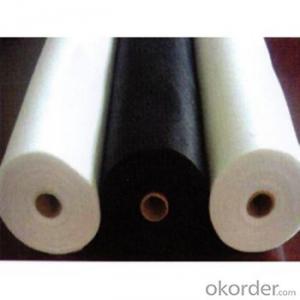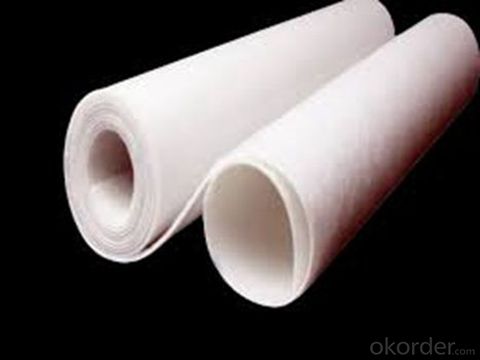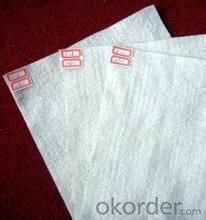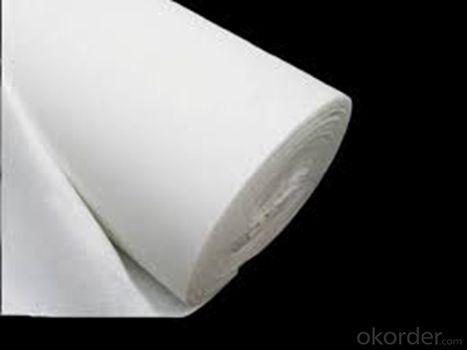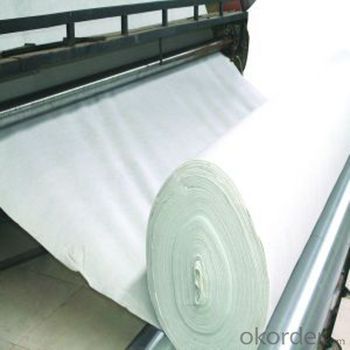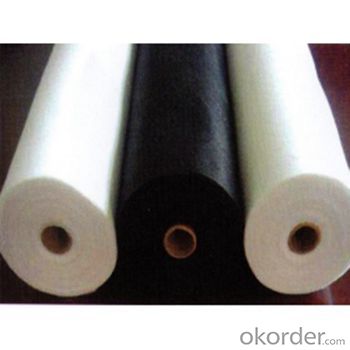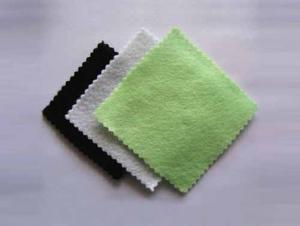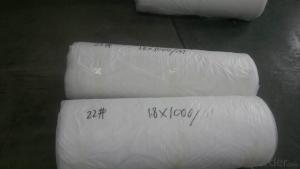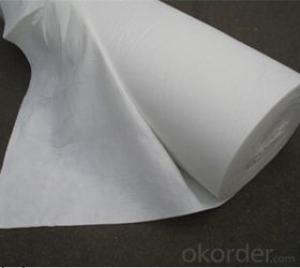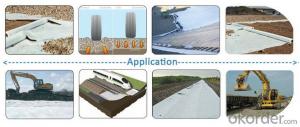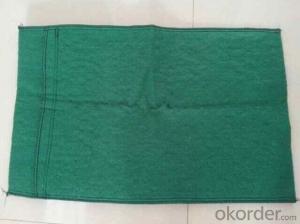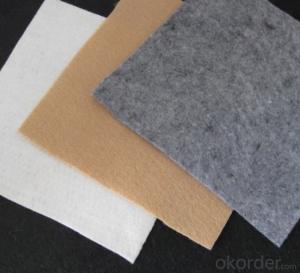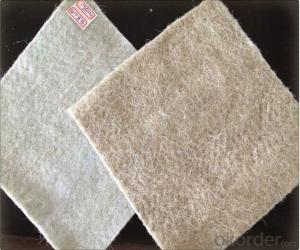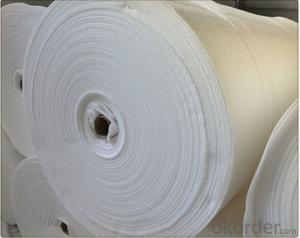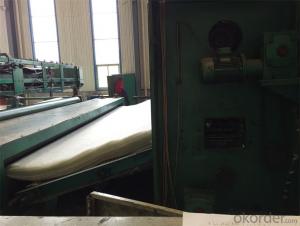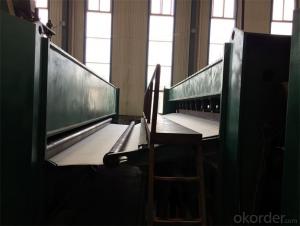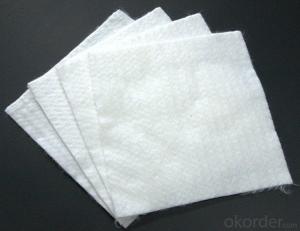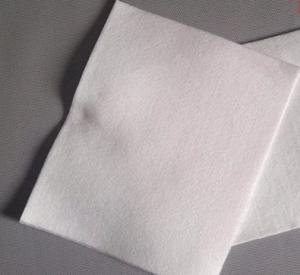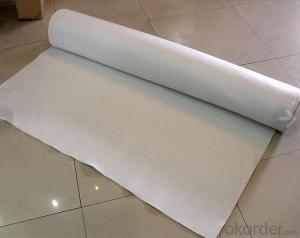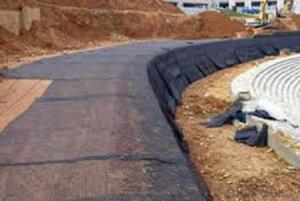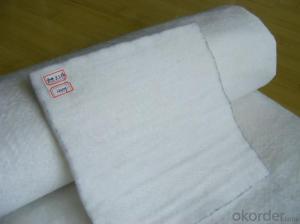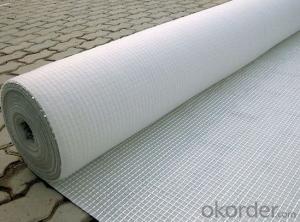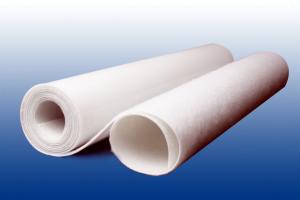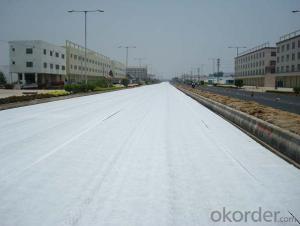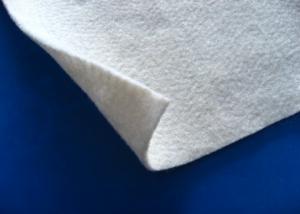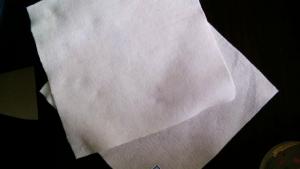Geotextile Fleece Membrane Polyester Long Fiber Spunbond Needle Punch Nonwoven Geotextile-CNBM
- Loading Port:
- China main port
- Payment Terms:
- TT OR LC
- Min Order Qty:
- 10000 g/m²
- Supply Capability:
- 1000000 g/m²/month
OKorder Service Pledge
OKorder Financial Service
You Might Also Like
Specification
1) Composition: 100% polypropylene
2) Weight: 10 - 300gsm
3) Width: maximum 2.4m wide (can be splited)
4) Various colors available
5) Characteristics: environmentally-friendly, good tensile strength, soft, lightweight,
non-toxic, water-resistant, air permeable
6) Usage:
a).daily use: making shopping bags, suit cover, surgical cover, cloth interlining, table cloth, bed sheet etc.
b). In agriculture: to protect the crop from pest harm, allows water, air and fertilizer to penetrate and reduces moisture evaporation.
c). in industry: to wrap to drainpipe etc.
7) Auxiliary treatment: UV protection, anti-virus, fire-retardant, antistatic, hydrophilic
8) Customers' specifications available
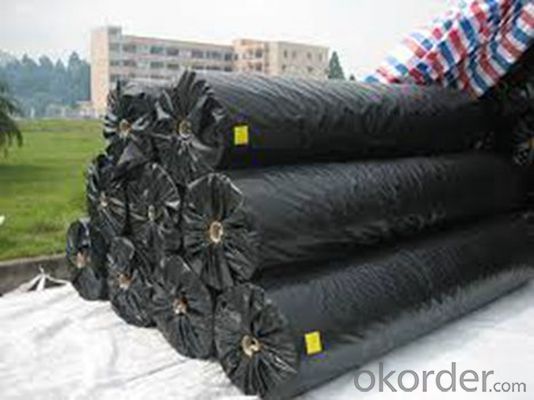
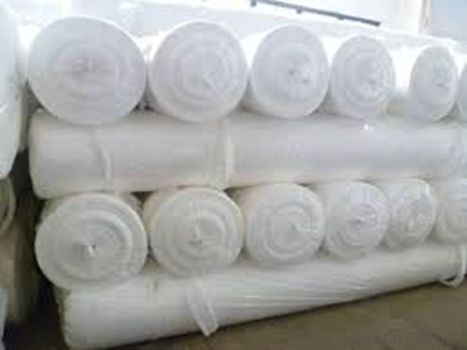
Quality assurance
1.On a regular basis or as per your request,we entrust national testing agencies to conduct quality inspections
2. Strictly in accordance with the ISO9001-2008 international quality system standard,we monitor and manage the whole process throughout production,quality testing,and measurement to ensure product quality
3. For quality-related construction delay or substandard construction(except for damage or losses due to customer’s responsibility or irresistible natural disasters),we have refunding,replacement,and repair services.We will respond to customers’ feedbacks on quality issues within 24 hours.
After-sales service
1.In order to provide customers with comprehensive technical support,we will provide technical and other related information upon request in a timely manner.
2.In required,we will appoint specialized technicians to the construction site to give technical trainings to construction people,and offer technical guidance throughout the whole construction process.
3.For damage due to shipment and delivery,after we receive the complaint,we will check the issure through provided pictures and videos.If our responsibility is confirmed,we wil offer free replacement.
4.When the construction is completed,as your request,our technical staff may participate in the final acceptance.
FAQ:
Q: What kind of payments does jenor support?
A: T/T, L/C, Cash are accepted.
Q: Do you charge for the samples?
A: Accordeing to our company policy, the samples are free, we only charge the freight fee. And we will return the freight fee during the next order.
Q: Can you produce according to customers' design?
A: Sure, we are professional manufacturer, OEM and ODM are both welcome.
Q: Do you have other products?
A: Yes, please check the pictures:
- Q: How do geotextiles help with subgrade stabilization?
- Geotextiles help with subgrade stabilization by providing a strong, flexible, and permeable layer that separates the subgrade soil from the overlying layers. This prevents the mixing of different soil layers, increases the load-bearing capacity of the subgrade, reduces settlement and deformation, and improves overall stability and performance of the pavement or structure.
- Q: Can geotextiles be used in geocomposite drains?
- Yes, geotextiles can be used in geocomposite drains. Geocomposite drains are comprised of multiple layers, including a geotextile layer that helps with filtration and separation. The geotextile layer allows water to flow through while preventing the passage of soil particles, making it an effective component in geocomposite drain systems.
- Q: What are the factors to consider when maintaining geotextiles?
- When maintaining geotextiles, there are several factors to consider. Firstly, it is important to regularly inspect the geotextiles for any signs of damage or wear. This includes checking for tears, holes, or fraying, as well as monitoring the overall condition of the material. Secondly, it is crucial to properly clean the geotextiles to prevent the buildup of dirt, debris, or organic matter that can compromise their effectiveness. This may involve using appropriate cleaning methods such as gentle washing or vacuuming. Additionally, considering the environmental and weather conditions in the specific location where the geotextiles are installed is essential. Extreme temperatures, UV exposure, and moisture levels can impact the durability and longevity of the material, so appropriate protective measures should be taken to mitigate these factors. Lastly, regular maintenance should include reassessing the performance of the geotextiles and their compatibility with the intended application. This may involve consulting with experts or conducting periodic testing to ensure that the geotextiles continue to meet the required standards and objectives. Overall, diligent inspection, cleaning, protection, and evaluation are key factors to consider when maintaining geotextiles.
- Q: What are the routine tests of geotextile geotextiles?
- The geocell is mainly the tensile strength of the tensile test lattice sheet and the peel strength of the solder joint. Geotextile according to the specific circumstances of the use of the project 1. Roadbed reinforcement, isolation is mainly tensile test tensile strength, elongation, tear strength and CBR top broken 2. Filter with the addition of these also use the vibrating screen test Equivalent pore size 3. Maintenance is mainly weight, thickness and strength
- Q: Geotextile is used to do anything
- Geotextiles have multiple varieties, there are a variety of uses, different varieties have a different emphasis on different functions. Woven geotextile, or geotextile, can be used for foundation treatment in the reinforcement and isolation and filtration. Non-woven geotextile, mainly used for foundation treatment in the filter and isolation. Can also be used in other projects in the filter. Nonwovens for the example of the filter: now in the municipal engineering around the Yinjing, often because the surrounding groundwater into the Yinjing will take away part of the soil, resulting in the loss of soil around the wells, the results in the perimeter around the wells There is a collapse phenomenon, if the circle around the perimeter of the laying of non-woven geotextile, the side can play a role in filtering, so that groundwater can flow into the Yinjing, but the soil will not lose the purpose of the perimeter around the soil There will be no collapse of the phenomenon.
- Q: River design design depth of 1 meter, 100 meters wide surface, requiring geotextile cloth two films. How many grams are appropriate? Bao Bao package material per square meter open to move to cut the amount of taxation Bao Bao Bao how much money first thank you master, urgent use. More
- Collar - Xiang, composite geomembrane, geotextile, a variety of specifications
- Q: National standard geotextile and non - standard how to distinguish
- First of all, the appearance: the national standard geotextile because of the use of high-quality production of large fiber, the production of Dan Shan measured Yao non-astonishing stone products will be dense needle, the appearance of bright white or white. Rather than the standard geotextile generally used in the production of small or small fiber, the product is slightly loose acupuncture, the appearance of dark yellow or gray soil. GB geotextile and non-standard geotextile together through the appearance is easy to distinguish. Second, the strength: the national standard geotextile material is excellent, strong product breaking strength and bursting high strength, the same weight of non-standard geotextile products broken strength and broken broken strong, can be used to tear, items piercing and other methods to distinguish the quality of simple Good or bad. Finally, the price: GB geotextile price is higher than non-standard geotextile, the procurement of less than the market price of geotextiles to be careful.
- Q: Polyester filament nonwoven is filament geotextile
- Yes, generally do geotextile material, polyester filament nonwoven fabric refers to filament geotextile. Huazhi geotechnical materials manufacturers to answer your questions
- Q: What is the price per square of the non-woven polyester fabric? What is the difference between the geotextile used in the building?
- Non-woven geotextiles generally use polyester and polypropylene fiber. Polyester is polyester. The price is the market, at any time change. If per square meter, it is necessary to know how much weight. So can only say how much price / ton. Now about ~ yuan / ton.
- Q: Can geotextiles be used in green or sustainable building practices?
- Yes, geotextiles can be used in green or sustainable building practices. Geotextiles can serve multiple purposes, such as erosion control, soil stabilization, and water drainage, which align with the principles of green and sustainable building. By using geotextiles, builders can reduce the need for chemical erosion control methods, minimize soil disturbance, and conserve water resources, making it an environmentally friendly choice for construction projects.
Send your message to us
Geotextile Fleece Membrane Polyester Long Fiber Spunbond Needle Punch Nonwoven Geotextile-CNBM
- Loading Port:
- China main port
- Payment Terms:
- TT OR LC
- Min Order Qty:
- 10000 g/m²
- Supply Capability:
- 1000000 g/m²/month
OKorder Service Pledge
OKorder Financial Service
Similar products
Hot products
Hot Searches
Related keywords
